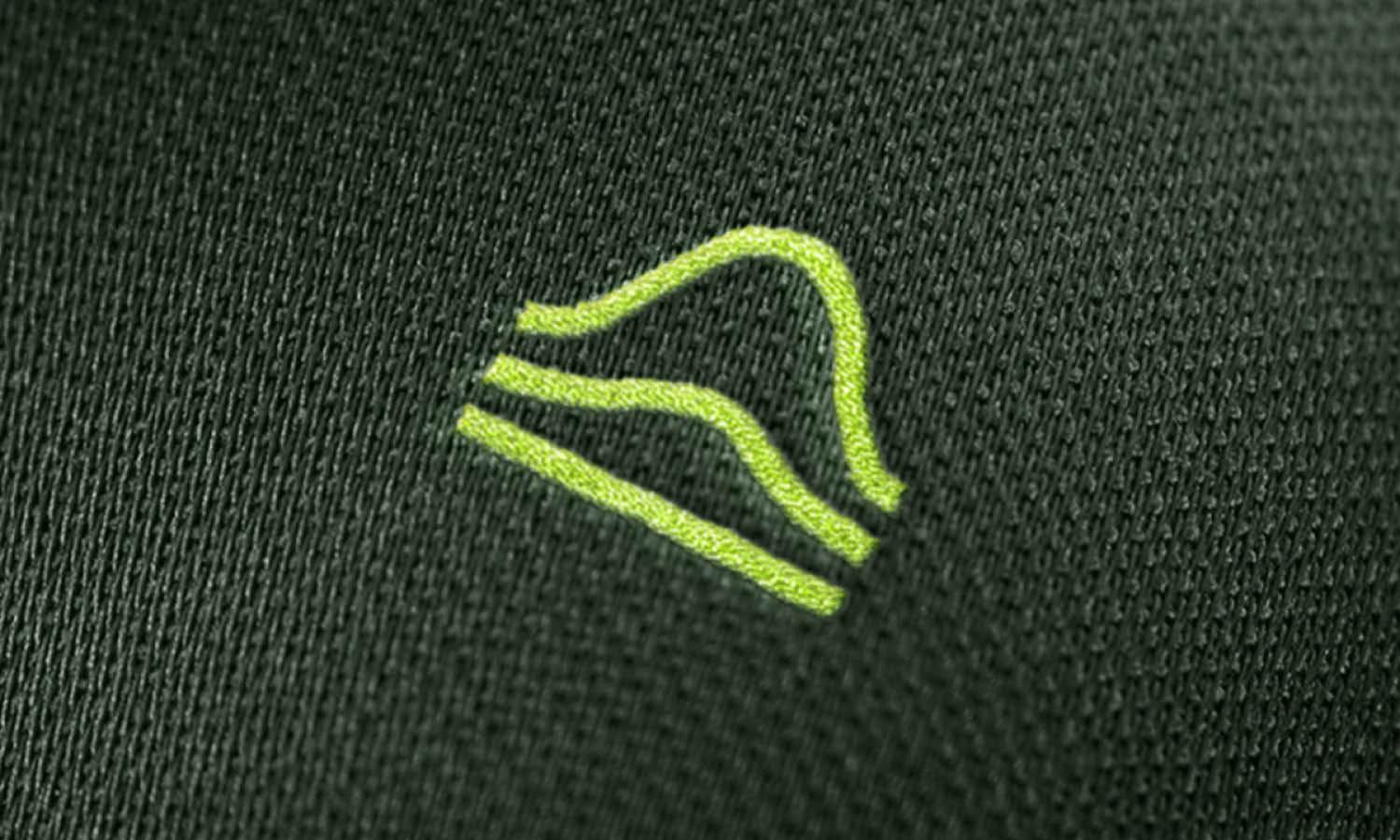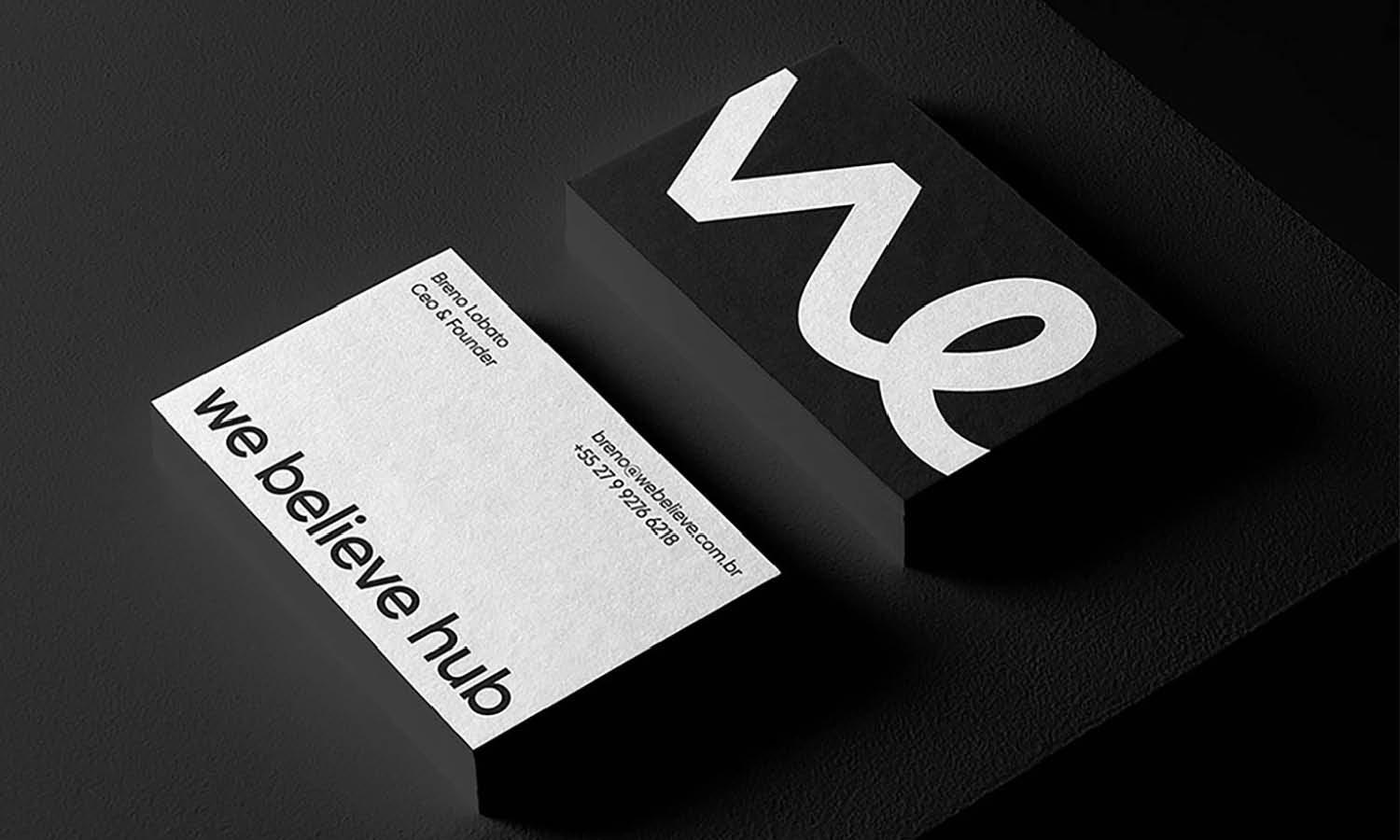How to Print Logo Designs on Ceramic

Source: Izaz Mahammad, DirectTalk - Brand Identity, Behance, https://www.behance.net/gallery/165615797/DirectTalk-Brand-Identity-Design
Printing logo designs on ceramic items is an increasingly popular technique among businesses and creatives seeking to enhance their brand visibility and personalize their products. Whether for promotional giveaways, corporate gifts, or custom merchandise, ceramic printing offers a durable and aesthetically pleasing solution. The process involves transferring a logo onto ceramic materials such as mugs, plates, or tiles, which can then be fired in a kiln to ensure the design is permanent and resistant to wear. This technique not only adds a professional touch to the items but also ensures that the logo remains vibrant and intact even after multiple washes.
By choosing to print logo designs on ceramic, companies can create unique and memorable products that reflect their brand identity and resonate with their audience. In the following sections, we will explore the essential steps and considerations involved in printing logo designs on ceramic, ensuring that even beginners can achieve professional-quality results.
Choose the Right Ceramic Material
Selecting the appropriate ceramic material is crucial when planning to print logo designs on ceramic surfaces. Different ceramics have varying qualities that can affect the final print's appearance and durability. Porcelain and stoneware are popular choices due to their smooth surfaces and robustness, making them ideal for high-quality print results. These materials are less porous compared to earthenware, providing a better base for the inks to adhere and less absorption, which can alter the appearance of the design.
It's essential to consider the end use of the ceramic item when choosing the material. For items that will undergo frequent use and cleaning, such as mugs and plates, a harder ceramic like porcelain is preferable for its ability to withstand wear and tear while maintaining the integrity of the print. On the other hand, decorative pieces that require fine detail and vibrant colors benefit from a lighter ceramic base, which can highlight the intricacies of the logo design.
Furthermore, the compatibility of the ceramic material with the type of ink and the firing process must be considered to avoid any chemical reactions that could damage the ceramic or alter the design during the firing process. Consulting with suppliers and conducting preliminary tests on materials can help determine the best ceramic base for specific logo designs, ensuring that the printed outcome is both visually appealing and long-lasting.
Prepare the Surface
Preparing the ceramic surface properly is a critical step in the printing process, as it ensures that the logo design adheres well and displays the intended colors and details clearly. The first step is to thoroughly clean the ceramic piece to remove any dust, grease, or residues that might interfere with ink adhesion. This can typically be achieved using isopropyl alcohol or a similar solvent that evaporates quickly, leaving a clean, residue-free surface.
Once cleaned, it's important to assess the smoothness of the surface. Any bumps or irregularities can cause inconsistencies in the print. If necessary, lightly sand the area with fine-grit sandpaper to create a uniformly smooth surface. After sanding, another round of cleaning may be required to remove any dust created by the sanding process.
For ceramics that have a glazed surface, a light etching might be necessary to create a better bond for the ink. This can be done chemically or mechanically, depending on the type of glaze and the equipment available. However, care must be taken to not damage the ceramic's integrity.
Finally, applying a primer specifically designed for ceramic printing can enhance the ink's adhesion and longevity, especially for items that will be used frequently or exposed to elements. This preparatory step plays a significant role in the quality and durability of the printed logo, ensuring that it remains vibrant and intact through use and cleaning.
Select the Appropriate Inks
Choosing the right inks for printing logo designs on ceramic is essential for achieving vibrant, durable results. Ceramic inks are specifically formulated to withstand high temperatures and adhere to ceramic surfaces without fading or peeling. These inks are typically made from ceramic particles mixed with glass frit and a medium that burns off during firing.
When selecting inks, consider the firing temperature and the type of ceramic material to ensure compatibility. Inks are available for various firing ranges, suitable for earthenware, stoneware, and porcelain. It's important to match the ink's firing temperature with the ceramic's maturation temperature to prevent damage during firing.
For color accuracy and vibrancy, solvent-based ceramic inks are a popular choice. They offer a wide range of colors and are capable of producing sharp, detailed prints. However, for eco-friendlier options, water-based inks are available and provide good results with a lower environmental impact.
Another factor to consider is the opacity and transparency of the ink. Some designs may require a more translucent ink to achieve a particular visual effect, while others might need opaque inks to stand out against the ceramic background.
Ultimately, testing different inks on a small scale before committing to a large batch is crucial. This ensures that the chosen ink meets all aesthetic and performance criteria, leading to a successful and satisfactory final product.

Source: Malika Kiddee, Pinerii (Brand Identity), Behance, https://www.behance.net/gallery/170342171/Pinerii-%28Brand-identity%29
Utilize Silkscreen Printing
Silkscreen printing is a highly effective technique for applying logo designs onto ceramic surfaces, offering precision and versatility for both small and large-scale productions. This method involves pushing ink through a stencil or a mesh screen directly onto the ceramic.
To begin with, create a custom screen where your logo design has been emblazoned. This screen will serve as a template through which the ink will be applied to the ceramic piece. The ceramic surface should be prepared and primed, as previously discussed, to ensure optimal ink adherence.
One of the main advantages of silkscreen printing is the ability to use thick layers of ink, which are ideal for creating vivid, opaque colors that are crucial for branding purposes. Additionally, it allows for the use of specialty inks, such as metallic or fluorescent colors, which can enhance the visual impact of the logo.
When setting up for silkscreen printing, ensure that the screen is tightly secured and aligned correctly with the ceramic item to avoid smudging or misplacement of the design. The ink is then squeegeed across the screen, pressing it through the mesh and onto the ceramic.
After printing, the ceramic items need to be carefully dried and then fired in a kiln to cure the ink permanently onto the surface. This firing process solidifies the design's integration with the ceramic, ensuring that it is dishwasher safe and resistant to wear and tear.
Silkscreen printing is particularly suitable for projects where high-quality, repeatable results are necessary, making it a preferred choice for branding and high-volume production of custom ceramics.
Consider Digital Ceramic Printing
Digital ceramic printing is a modern method that allows for direct printing of detailed logo designs onto ceramic surfaces. This technology uses digital printers that can handle ceramic inks, which are specially formulated to endure the firing process in a kiln. Digital ceramic printing is highly suited for producing full-color images with high precision and excellent resolution.
The key advantage of digital printing is its versatility in handling complex designs and multiple colors without the need for separate screens or stencils. This reduces setup times and costs, making it ideal for small to medium production runs that require detailed imagery or customization. The inkjet technology in digital printers deposits the ceramic ink directly onto the flat or slightly curved ceramic surface, layer by layer, allowing for the creation of vibrant, multi-tonal designs with photographic quality.
Before printing, ensure that the ceramic piece is clean and free of any debris. The digital printer can accurately place the design onto the ceramic, adhering to the contours and texture of the material. After printing, the ceramics are dried and then fired in a kiln to approximately 800 to 1200 degrees Celsius, depending on the ink and the type of ceramic. This process permanently fuses the ink into the glaze, ensuring the print is scratch-resistant and capable of withstanding UV light and moisture exposure.
Digital ceramic printing is particularly beneficial for custom or bespoke projects where each piece requires individual attention or unique design elements, offering manufacturers and artists a flexible and efficient printing solution.
Apply Transfer Decals
Applying transfer decals is another effective technique for printing logo designs on ceramic. This method involves creating a decal, which is a print on a special paper that can be transferred onto the ceramic surface. The process begins with printing the logo design onto a water-slide decal paper using ceramic inks. Once printed, a covercoat layer is applied to the decal, which helps the ink transfer off the paper and onto the ceramic when moistened.
The next step is to cut out the decal close to the edges of the design to avoid excess border and then soak it in water. The water loosens the thin film carrying the printed design from the paper backing. This film is then carefully slid onto the ceramic item in the desired position. Once positioned, the surface is dabbed gently to remove any water and air bubbles, ensuring that the decal adheres smoothly without creases or bumps.
After the decal is applied, the ceramic is allowed to dry completely. The final step is to fire the ceramic in a kiln, which permanently fuses the decal with the ceramic glaze. This firing process ensures that the design is embedded within the glaze, making it durable and resistant to fading or peeling.
Transfer decals are particularly useful for intricate or multicolored designs that are difficult to achieve with traditional direct printing methods. They are ideal for limited-edition runs or personalized items, offering a high level of detail and color fidelity. This method also allows for greater flexibility in design placement and application on varied ceramic forms.
Use Underglaze Techniques
Underglaze techniques offer a versatile approach for printing logo designs on ceramic, allowing for a wide range of artistic expressions. This method involves applying colored decorative patterns beneath the glaze layer, which not only protects the design but also enhances its appearance after firing. Underglazes are available in a variety of forms, including liquid, slip, and powder, and can be applied using brushes, sponges, or through silkscreening methods.
The process starts with the application of underglaze to the bisque-fired ceramic. The design is meticulously painted or printed onto the surface, where the underglaze can be absorbed into the porous clay. This is ideal for detailed or intricate designs that require precise application. The underglaze's primary advantage is its ability to withstand high firing temperatures without fading, ensuring that the colors remain vibrant and true to their original hue.
After applying the underglaze, the ceramic piece is usually left to dry thoroughly. Subsequent to drying, a transparent or lightly tinted glaze is applied over the entire piece. This top glaze layer not only seals and protects the underglaze artwork but also adds to the overall shine and depth of the finished product.
Firing the ceramic in a kiln is the final step, which solidifies the underglaze beneath the glaze coat. The firing temperature must be carefully controlled to ensure that the glaze matures without distorting or bleeding the underglaze designs beneath. This method is particularly popular for pieces that require a durable finish and vibrant, enduring colors.

Source: Zhihua Duan, Daydreaming by Monos, Behance, https://www.behance.net/gallery/171930109/Daydreaming-by-Monos
Employ the On-Glaze Method
The on-glaze method for printing logo designs on ceramic involves applying the artwork on top of an already glazed surface. This technique is typically used when the design requires bright, vivid colors that stand out against a glossy background. On-glaze paints, which consist of finely ground glass mixed with a medium and pigment, are applied to the surface of the glazed ceramic.
After the design is painted or printed, the ceramic is fired at a lower temperature compared to the initial glaze firing. This temperature is sufficient to fuse the on-glaze materials to the surface but not so high as to melt the underlying glaze layer. The key is to achieve a smooth and durable finish without compromising the integrity of the base glaze.
This method allows for a high level of detail and color brightness, making it suitable for logos and designs that demand attention. However, since the on-glaze layer sits on top of the glaze, it may be more susceptible to wear and chipping over time compared to in-glaze or underglaze techniques. Therefore, it is crucial to apply a protective overglaze if the ceramic will be used frequently or washed regularly.
Employing the on-glaze method requires precision and careful control of the firing process to ensure that the design adheres properly and maintains its aesthetic qualities. This technique is ideal for decorative pieces or special occasion items that require a striking visual impact.
Consider the Firing Temperature
Firing temperature is a critical factor in the process of printing logo designs on ceramic. This temperature determines how the ceramic inks and glazes react and stabilize, ultimately affecting the durability and appearance of the final product. Different types of ceramic materials and inks may require specific firing temperatures to achieve optimal results.
For underglaze and on-glaze techniques, the firing temperature must be precisely controlled to ensure that the ink or paint fuses well with the ceramic without causing any damage. Underglaze usually requires a higher temperature range, around 1200 to 1300 degrees Celsius, which allows the design to embed into the surface before the glaze is applied and fired. On-glaze methods, on the other hand, use lower temperatures—typically 750 to 800 degrees Celsius—since the design is applied over the already glazed and fired surface.
Digital ceramic printing also demands careful temperature management. The temperature must be high enough to properly mature the ceramic ink so it integrates into the glaze, but not so high that it distorts the design or the shape of the ceramic piece. Generally, digital prints are fired at temperatures ranging from 800 to 1200 degrees Celsius, depending on the ink formulation and the ceramic base.
Consistent monitoring and control of the kiln's temperature are essential for avoiding defects such as color shifts, blurring, and glaze fit issues. Using a kiln with accurate temperature controls and a reliable pyrometer can help maintain the necessary conditions for producing high-quality printed ceramics.
Seal the Design
Sealing the design after printing is paramount to enhancing the durability and longevity of logo designs on ceramic. This process involves applying a clear protective glaze over the printed design, which not only protects the logo from physical wear and environmental factors but also enhances the overall aesthetic by adding a glossy or matte finish.
The choice of sealant depends on the type of printing technique used and the intended use of the ceramic item. For everyday use items like mugs or plates, a high-gloss glaze can be beneficial for its ability to resist stains and scratches. Alternatively, for decorative pieces, a satin or matte finish might be preferred to reduce glare and provide a more sophisticated look.
The application of the sealant is typically done after the initial printing and any necessary firings. It is important to apply the sealant evenly and thoroughly, covering every part of the design to ensure complete protection. Once applied, the ceramic must be fired again at a temperature that is suitable for the sealant material. This firing cures the sealant, binding it permanently to the surface and encasing the design beneath a hard, protective layer.
Properly sealed ceramics are more resistant to fading, chipping, and water damage, making them suitable for both functional and decorative uses. Additionally, this sealing step ensures that the design remains vibrant and clear, preserving the visual impact of the logo for years to come. This attention to detail in the sealing process is crucial for maintaining the quality and integrity of branded or artistically designed ceramic items.
Conclusion
Printing logo designs on ceramic requires precision across every step, from selecting the right materials to applying the final sealant. Each technique, whether digital printing, underglaze, on-glaze, or using decals, offers unique benefits suited to different types of ceramic projects. Proper preparation of the surface, choosing the right inks, and carefully considering the firing temperature are crucial for achieving high-quality results. Sealing the design ensures durability and longevity, preserving the vibrancy and detail of your logo. By mastering these methods, you can enhance the aesthetic appeal and functional quality of your ceramic items, making them stand out in any setting.
Let Us Know What You Think!
Every information you read here are written and curated by Kreafolk's team, carefully pieced together with our creative community in mind. Did you enjoy our contents? Leave a comment below and share your thoughts. Cheers to more creative articles and inspirations!















Leave a Comment